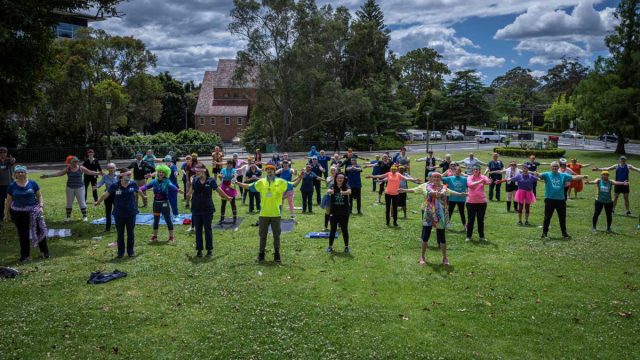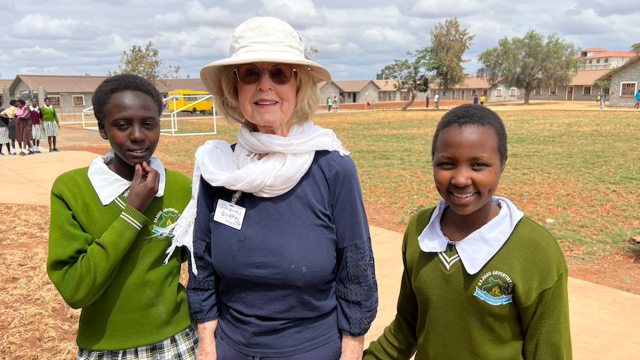Adventist World associate editor Gerald Klingbeil recently sat down with Geoffrey Mbwana, a General Conference vice president and chair of the International Board […]

Adventist World associate editor Gerald Klingbeil recently sat down with Geoffrey Mbwana, a General Conference vice president and chair of the International Board of Ministerial and Theological Education (IBMTE), and Lisa Beardsley-Hardy, director of the Department of Education of the General Conference and secretary of the IBMTE, to talk about the process involved in the development of the Denominational Endorsement for professors in theological, ministerial, and religious education.
What is the function of the International Board of Ministerial and Theological Education?
LB-H: The IBMTE is the board by which the Department of Education and the Ministerial Association work hand-in-hand to prepare pastors.
GM: This includes fostering dynamic theological unity in the world church but also sharpening the focus on the Seventh-day Adventist message and mission. It also involves supporting the spiritual and professional development of faculty involved in ministerial programs, promoting professional excellence in ministerial training and practice, and nurturing strong collaboration between church leaders, educational institutions, and the faculty engaged in the training of ministry.
Why is fostering unity so essential?
LB-H: Because we are a global, multicultural church. We’re not a national church. We span the entire globe, and various places have different needs. Having an entity such as IBMTE allows us to listen to the needs of the field, to be responsive to them and adapt to them, which is why, starting in 2015, we began the process of reviewing page by page the Handbook of the IBMTE to ensure that what we’re doing in preparing pastors is concordant with the needs of the field around the world.
What is the significance of this endorsement process described in the Handbook?
LB-H: The endorsement and the Handbook were voted at our last meetings (on October 3, 2016, and April 5, 2017), but part of the endorsement process includes components, one of which is pastoral ethics. The ethics document was reviewed page by page to ensure that we’re addressing current issues. For example, there’s a new section dealing with child protection and child safety. Another aspect of ethical sexual behavior concerns how we relate to same-sex relationships. What do we do when the pastor is female, not male? Gender-neutral language was included to reflect contemporary realities.
GM: This is relative not just to the ethics but to every other component of the handbook. We can see that as times change, this document is a dynamic document that relates to the whole process of theological ministerial formation. We go back and look at the handbook and see what we really need to update, and the process is global.
The handbook covers many different areas, including appropriate curriculum and personal qualities of faculty training future ministers. What would you say to those who may feel that this document encroaches on academic freedom?
LB-H: There are limitations on freedom in any academic institution. You can’t say that the moon is blue and insist on that and teach it in your classroom. You can’t say blatantly racist things and expect that to be acceptable. In any academic institution there are limits to the freedom. A key function of academia is to generate new knowledge, but positions that undermine the Fundamental Beliefs of the church need to be brought to the entire church’s attention through an established vetting process and not be introduced in the classroom, where there is such a power differential between teacher and student. One of IBMTE’s expectations for faculty is that they teach in a way consistent with the Fundamental Beliefs of the church and that they use methods of Bible study that the denomination considers acceptable. These beliefs and standards of Bible study are publicly available in voted documents.
GM: The document does not restrict the academic growth of a professor, but it clearly states what needs to be passed on to the student and how they can participate in academic growth.
Does this mean that all Seventh-day Adventist theological education around the globe—whether in Germany, Uganda, or Brazil—will look exactly the same? Is there space for cultural differences?
LB-H: Yes. In fact, we have an expectation that adaptations will be made.. If people are working in a specific region, they need to understand and be responsive to the needs of ministry in that region.
GM: This is an international board, but within the region, the divisions, there is the BMTE—a Board of Ministerial and Theological Education. By General Conference Working Policy, each division has a BMTE. They can give it another name, but with the same purposes. Those BMTEs then localize what comes from the international board, and they’re very much involved in the whole process of overseeing ministerial and theological education for their region. We have talked a lot in here about the faculty endorsement process. The process itself starts with each institution. That’s where much of the work is done, and then it’s communicated to the BMTE, and we register here at the international board what has happened at those levels. So, yes, endorsement is very close to where ministerial and theological education is actually happening.
When you think about the future of Adventist theological education, maybe even broader Adventist education, what does church unity mean within that context?
LB-H: That’s an important question. If you look at who the members of the IBMTE are, you can see that we work very hard to ensure broad representation by expertise, by level, by region, and by the broad areas of ministry. We don’t elect or appoint a king who then makes pronouncements. The Seventh-day Adventist Church has always done its work through committees.
Theological unity can adapt to cultural diversity, but we are still seeking to work together. There may be tension between the individual convictions of an individual professor in a specific institution located somewhere in the world and the broader needs of the entire body.
But Scripture counsels us to submit to one another in love. That’s what IBMTE aspires to do. It brings us all around the table focusing on how we can work together. It asks how can we maintain our identity and the vitality of our mission as we prepare pastors for work in a diverse global society. It’s not always easy, and yes, we do have vigorous discussions.
GM: As a global body, we have a mission to deliver. To that extent, we would like to remain together in principles that we agree issue forth from the Bible. We want to remain together in areas of Bible interpretation. We sought that out together. What is the most acceptable, based on our values?
Once we agree on that, we seek commitment to that globally because of our identity and who we are. And yet we realize that the expression of these principles that we receive from the Bible may be valid in various contexts. But, again, in processes, in the way we arrive at interpretations, we would like to be together.
LB-H: At the end of the whole two-year process that involved meetings in different geographical locations, reflecting distinct Adventist realities, every member of the IBMTE Handbook Taskforce was given a gift—a wooden zebra. We said, “Let this remind you that the work of IBMTE is like a zebra. That is, education and ministry, education and ministry, education and ministry.” What makes the zebra beautiful is its alternating colors. What would a zebra be without its stripes? So if those of us in education and in ministry press together and work together, what we accomplish will be a thing of beauty. That’s what IBMTE seeks to do.








